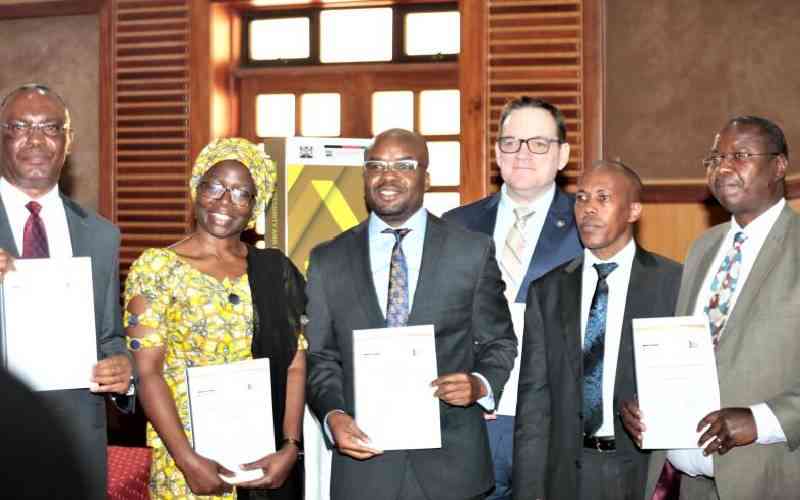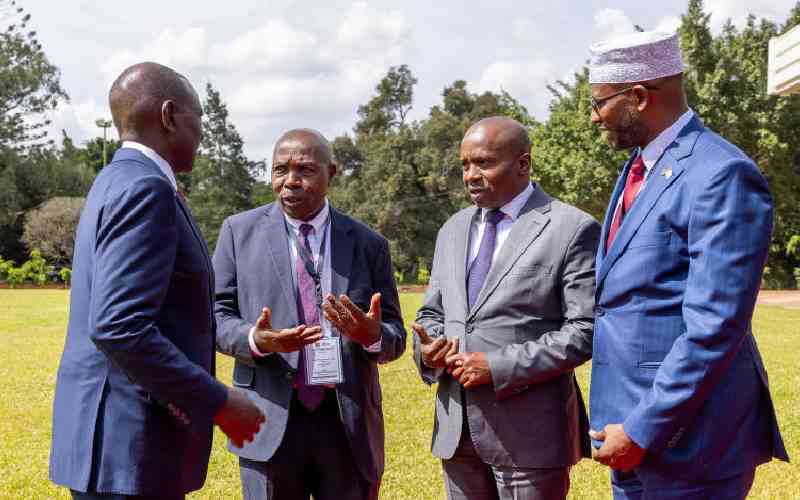BY KIUNDU WAWERU
Whenever the Kenyan story of independence is told, the ‘Kapenguria Six’ are always mentioned, and almost in reverence. This followed their arrest in 1952, when they were accused of being leaders of the Mau Mau.
But there are other individuals who came to public limelight and prominence aboard the Kapenguria saga. These are the lawyers who represented the accused, who included the nation’s founding father Jomo Kenyatta, Bildad Kaggia, Kung’u Karumba, Fred Kubai, Paul Ngei and Ochieng’ Oneko. They were represented by lawyers Dennis Pritt, Dudley Thompson, FRS De Souza and Achhroo Ram Kapila.
Kapila was then aged only 26. He was born in Ludhiana Punjab, India, before his family relocated to Kenya in 1930. Years later, in 1946, Kapila was called to the bar at Lincoln Inn in London.
After the unsuccessful Kapenguria trial, Kapila rose to become a prominent criminal lawyer, with a record of representing East African leaders including Julius Nyerere of Tanzania, Milton Obote of Uganda and Seychelles’ Albert Rene.
The Times newspaper of the UK, in eulogising Kapila after his death in 2003, said his life mirrored African progress by being involved in the fight against the injustices of colonial rule. Shortly after independence, Kapila and other progressive individuals involved in the freedom struggle found out that, as The Times put it, “it was a false dawn of independence”. The struggle continued and Kapila would speak out against the corruption creeping into government and also the Judiciary.
SURVIVED ORDEAL
This put him at loggerheads with politicians and at one time he was arrested and jailed for contravening foreign exchange control regulations. This followed a trip to Britain, after which the police found him in possession of £26 in his home.
He would survive the ordeal and go on to be honoured by the Law Society of Kenya for his life-long exemplary defence of human rights and the rule of law in Kenya
John Githongo, writing in Awaaz magazine about Ishan Kapila, son of Achhroo, said the senior Kapila was “willing to take ground breaking cases at the height of the emergency in the 1950’s.” He added, “Long before we had a class of ‘dissident lawyers’ who took on tough cases and then made good when regimes altered, we had the Kapilas quietly going about their meticulously subversive work seeking justice by defending Mau Mau types at a time when this made members of the community cringe.”
Githongo then charged that AR Kapila is one of Kenya’s true unsung heroes.
He was a popular man held dear in the hearts of Kenyans as demonstrated in June 2002, when a delegation of elders of the Lari and Agikuyu Peace Museums visited him at his office in Nairobi. This is recounted in Awaaz magazine by Rasik Shah, who apprenticed with AR Kapila in the 1960’s. He notes the wazee were seeking to reunite former Mau Mau fighters with the man who stood by them and defended them in the colonial courts in the 1950’s. There was Kaboro Tumbo, Muturi Githogo, Paul Thuku Njembui, Kimunyi Gathondu and Stanford Chege, with Muthee Thuku facilitating the get together. Though there were other lawyers in the trials, Shah says Kapila, whom he describes as a genius, “stood out tall among them and was well known and lauded throughout the land”.
In the meeting, Kaboro Tumbo of the Lari Memorial Peace Museum said Kapila had saved him from the colonial masters’ noose. The others also recounted horror stories at the hands of the colonialists.
Shah continues to say that as a symbol of honesty, integrity, ability and courage, Kapila was recognised worldwide. He was also the first recipient of the Law Society of Kenya honours award. At the ceremony, Kapila was hailed as the most brilliant lawyer Kenya’s bar had ever produced. The chairperson had gone on to heap praise adjectives to which Kapila humbly replied, “The words of praise seem to belong to another age, events so remote that, to the present generation, I must seem like a fossil or a dinosaur, of curious interest only to students of archaeology or pre-history.”
Stay informed. Subscribe to our newsletter
 The Standard Group Plc is a
multi-media organization with investments in media platforms spanning newspaper
print operations, television, radio broadcasting, digital and online services. The
Standard Group is recognized as a leading multi-media house in Kenya with a key
influence in matters of national and international interest.
The Standard Group Plc is a
multi-media organization with investments in media platforms spanning newspaper
print operations, television, radio broadcasting, digital and online services. The
Standard Group is recognized as a leading multi-media house in Kenya with a key
influence in matters of national and international interest.
 The Standard Group Plc is a
multi-media organization with investments in media platforms spanning newspaper
print operations, television, radio broadcasting, digital and online services. The
Standard Group is recognized as a leading multi-media house in Kenya with a key
influence in matters of national and international interest.
The Standard Group Plc is a
multi-media organization with investments in media platforms spanning newspaper
print operations, television, radio broadcasting, digital and online services. The
Standard Group is recognized as a leading multi-media house in Kenya with a key
influence in matters of national and international interest.





